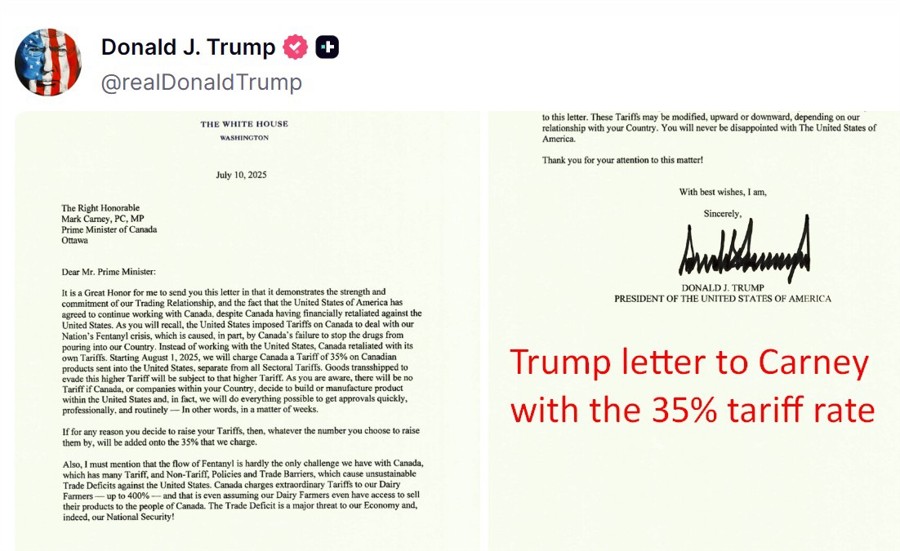President Trump’s decision to impose a 35% tariff on Canada has led to a sharp decline in the Canadian dollar, stirring uncertainty in North American trade relations just weeks before the new rates take effect on August 1.
The Canada dollar has fallen sharply with Trump’s 35% tariff rate on the country

Key Takeaways:
- President Trump imposes a 35% tariff on Canada.
- Tariff rates increased from previous 10% and 25% tiers.
- The Canadian dollar has fallen sharply in response.
- Uncertainty over continuation of USMCA trade exclusions.
- New tariffs take effect on August 1.
Tariff Increase Sparks Economic Concerns
President Trump has hit Canada with a significant tariff increase, raising the rate to 35%. This escalation moves beyond the previous two-tiered system of 10% and 25%, marking a substantial shift in the United States’ trade policy with its northern neighbor.
Canadian Dollar Experiences Sharp Decline
In the wake of the announcement, the Canadian dollar has fallen sharply. The sudden decline reflects market reactions to the heightened tariffs and concerns over potential economic repercussions for Canada’s export industries.
Uncertainty Over USMCA Trade Exclusions
Adding to the tension is the fact that the letter outlining the new tariffs does not specify whether current exclusions for trade compliant with the United States-Mexico-Canada Agreement (USMCA) will be extended. This omission leaves businesses uncertain about future trade conditions and could impact supply chains that rely on USMCA provisions.
August 1 Implementation Date Approaches
With the new tariff rate set to begin on August 1, there is limited time for stakeholders to adapt to the changes. The looming deadline intensifies the urgency for both nations to address the outstanding questions regarding trade exclusions and economic cooperation.
Looking Ahead
As the start date nears, the lack of clarity surrounding the USMCA exemptions fuels speculation about the direction of U.S.-Canada trade relations. The increase in tariffs and the resultant economic impact underscore the fragile nature of international trade agreements and the far-reaching effects of policy decisions.











